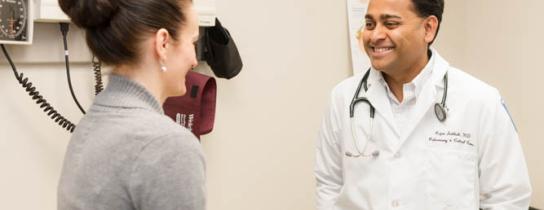
Lung Matters – A Four Part Series
Oxygen for the Blog
25 years ago this August, I began medical school as a novice. Now, I’ve realized it’s time for reflection, on time spent being involved, immersed and now genuinely appreciative of the field of medicine and in particular, my core specialty of pulmonary medicine, critical care and sleep medicine.
My four part series, Lung Matters, is for the casual reader across different fields of medicine, healthcare professionals, patients, caregivers and exercise and fitness enthusiasts.
While I will focus on facts, data, science, current guidelines and common sense when writing the blog, I would like to admit that the ideas expressed are all my own and should not to be taken as specific medical advice. I encourage you to talk to your trusted doctor who is your long-term ally and best guide when it comes to all matters of health.
Topic 1 - 4 things you didn’t know about your lungs:
- Breathing is more for removing CO2 rather than for utilizing O2.
- There is a 100 fold increase in CO2 of exhaled air when compared to inhaled air.
- On the contrary, exhaled air has only 4% lower O2 compared to inhaled air.
- Breathing, in addition to the above function, also helps facilitate speech, laughter, reflexes like coughing, yawning, sneezing and in certain animals, helps to regulate body temperature by panting.
- The lungs are pink in color at birth and turn dark as we breathe in dust and pollution.
- There are 480 million alveoli (smallest lung unit) in an average human’s lungs.
Topic 2 - COPD facts:
- Chronic Obstructive Pulmonary Disease (COPD) was coined in 1965 and combined previously described entities - Emphysema (Pink Puffers) and Chronic Bronchitis (Blue Bloaters), after similarities of pathogenesis and clinical overlap was noted.
- 6.3% of the population or approximately 15 million people in the US have been diagnosed with COPD.
- COPD was responsible for 730,000 hospitalizations in the US in 2011 and cost 5.7 Billion dollars to manage.
- COPD is the 3rd leading cause of death in the U.S.
Topic 3 - Critical Care Medicine – how did it all begin?
- In 1853, Florence Nightingale championed diligent nursing principles during the brutal Crimean war and was able to significantly reduce mortality and morbidity.
- In 1952, Polio devastated Denmark and led to the development of the negative pressure ventilator, otherwise described as the Iron Lung (Ibsen), and subsequently the positive pressure ventilator (Engstrom), which revolutionized management of critically ill patients.
- In 1959, the first modern critical care unit was established at the University of Southern California and in the same year, at the University of Pittsburgh.
- In 1962, the first critical care training program was started by Peter Safar and it subsequently led to the first critical care fellowship program at University of Pittsburgh.
Topic 4 - Exercise Physiology Pearls:
- What is your VO2 Max?
- VO2 Max is a measure of maximum aerobic capacity defined as the maximum rate of oxygen consumption as measured during incremental exercise, typically using a motorized treadmill or a cycle ergometer (stationary exercise bike).
- It is the most commonly used measure of exercise fitness.
- What is Cardiopulmonary Exercise Testing?
- Cardiopulmonary exercise testing (CPET) is an important clinical tool to assess exercise capacity and limitations due to cardiac, respiratory, skeletal muscle, hematopoietic system or neuropsychological compromise.
- What is the lung’s role in exercise conditioning?
- Healthy lungs can increase the minute ventilation (the product of respiratory rate and tidal volume, which is the normal resting breath volume) from a baseline of 6-8 liters to > 100 liters during maximal exercise.
- What about better sleep or more caffeine for improving your exercise performance?
- We will discuss this topic during the next blog post.
Stay tuned for the next series on Monday, November 6th!
Rajan Sadagopal K. Subbiah MD, is a Pulmonary and Critical Care Medicine Specialist and sees patients in Crystal Run's Newburgh and Rock Hill offices.

 Optum Radiology at Crystal Run Healthcare
Optum Radiology at Crystal Run Healthcare Request medical records online
Request medical records online